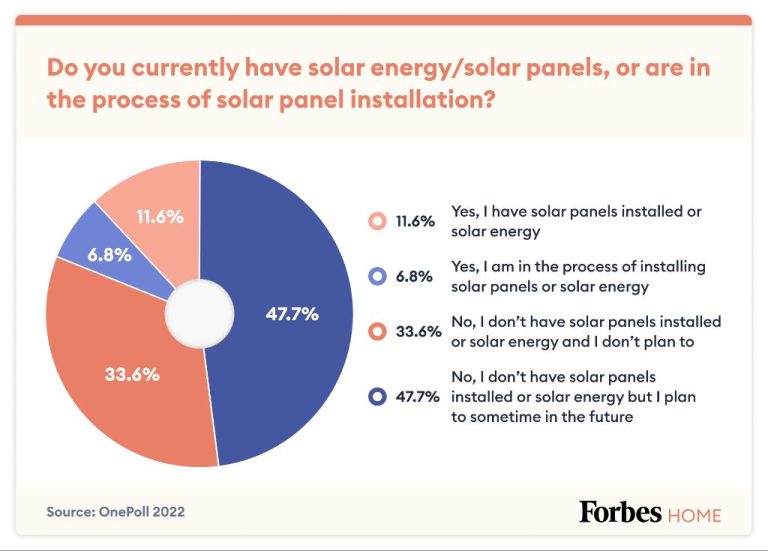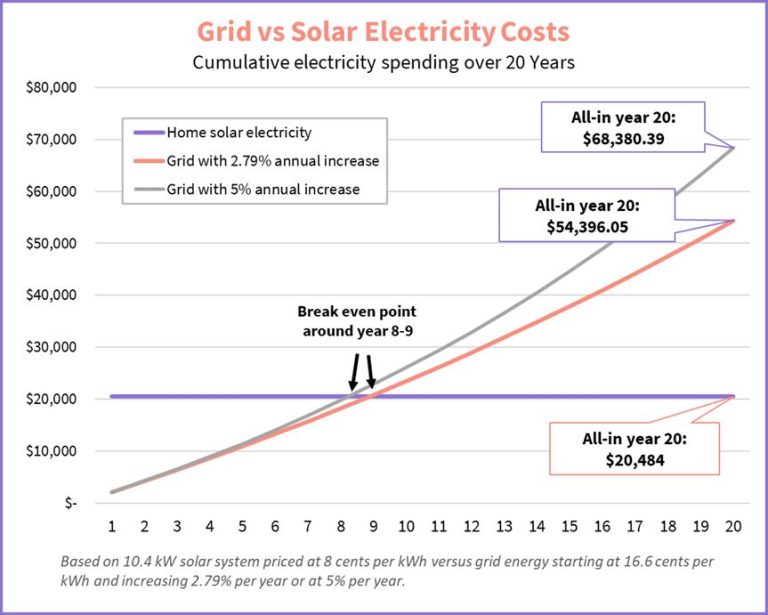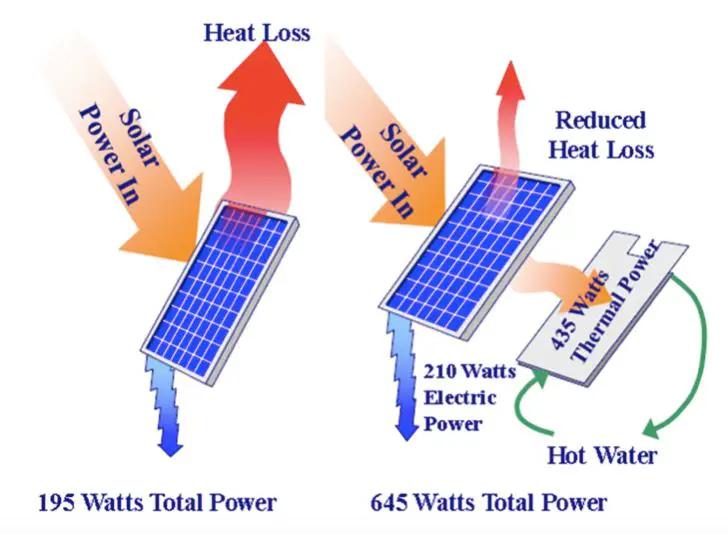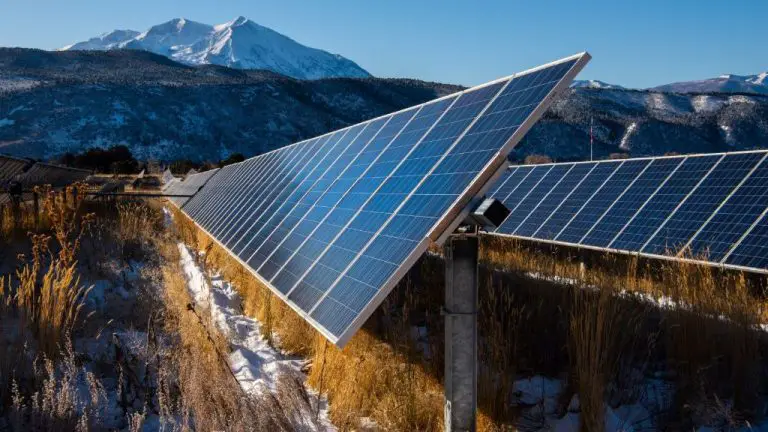What Would Happen If We All Went Solar?
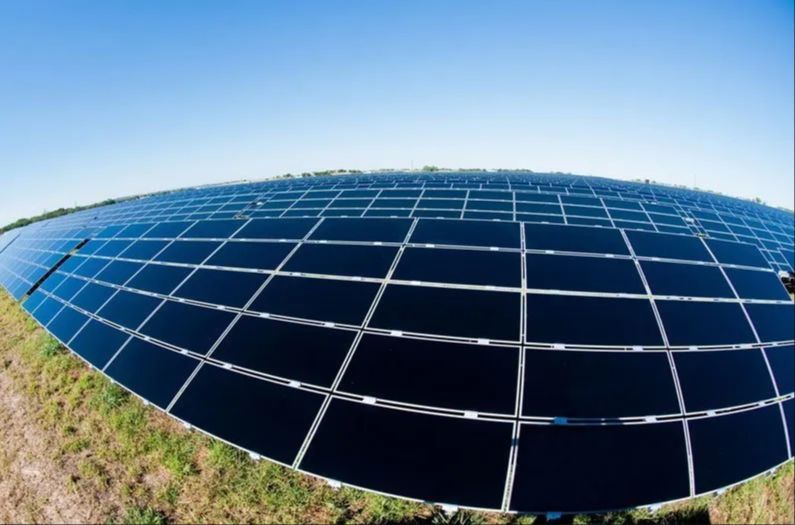
In recent years, solar energy has experienced rapid growth around the world. According to the International Energy Agency (IEA), solar PV generation increased by a record 270 TWh (up 26%) in 2022, reaching almost 1 300 TWh. In the United States, solar currently provides about 3-4% of electricity generation, up from less than 1% a decade ago, with an average annual growth rate of 24% (SEIA).
With costs continuing to fall and solar technology improving, there is great interest in the potential for solar to supply a major share of global electricity needs in the coming decades. However, scaling up solar to the point where it could largely replace fossil fuels would require massive investments and overcoming some significant technical hurdles. This article will explore the opportunities and challenges of widespread solar adoption, including impacts on electricity grids, economies, and societies.
Benefits of Widespread Solar Adoption
Widespread solar adoption has several key benefits that make it an appealing energy source. First and foremost is the environmental benefit. Solar energy generates electricity without any air or water pollution, greenhouse gas emissions, or hazardous waste production. According to the U.S. Department of Energy, “The amount of sun that hits the earth’s surface in one hour is enough to power the entire world for a year” [1]. Capturing even a fraction of that solar energy would significantly reduce our dependence on fossil fuels.
Widespread solar would also improve national energy security and independence. With solar panels on homes and businesses across the country, we would rely less on imported fuels and be more insulated from global energy market volatility. Local, distributed solar generation would make the grid less vulnerable to disruptions as well [2].
On an individual level, residential solar provides cost savings in the form of lower utility bills. Excess solar energy can even be sold back to the grid. There are tax credits and other financial incentives available in many areas to make solar even more affordable. Widespread adoption would help drive down costs further through economies of scale and technology improvements.
Challenges and Limitations
While solar energy has many benefits, there are also some significant challenges and limitations to consider if solar were adopted on a widespread scale. Some of the main difficulties include:
Intermittency – Solar energy relies on sunshine, which can be inconsistent due to weather, seasons, time of day, and location. Battery storage solutions are still limited and expensive. This makes it difficult to rely solely on solar energy 24/7.
Storage – Energy storage technology still has room for improvement in terms of capacity and costs. Storing solar energy for use when the sun isn’t shining remains prohibitively expensive for most households and the grid.
Grid stability – Incorporating a large amount of solar onto the existing electric grid can be technically challenging. Solar intermittency can cause instability in matching supply and demand. Upgrading the grid is complex and costly.
Space requirements – Solar farms require large plots of land. Rooftop solar is limited by roof size and orientation. Dense urban areas with scarce open space may struggle to accommodate enough solar capacity.
Upfront costs – While ongoing costs are low, installing solar still requires high upfront investment. This limits access to homeowners who can’t afford the panels. Leasing arrangements have opened access but have downsides.
Pollution from manufacturing – Producing solar panels generates some carbon emissions and toxic waste. The environmental impact from manufacturing should be minimized.
As solar expands, these technical and economic hurdles will need to be addressed through continued innovation, policy changes, and massive grid upgrades.
Impact on the Electricity Grid
The widespread adoption of rooftop solar and other distributed renewable energy sources would fundamentally transform the electricity grid. Currently, our grid relies on large, centralized power plants that send electricity in one direction to customers. With distributed solar, customers become “prosumers” that both consume and produce electricity. This two-way flow of electricity poses challenges for grid stability and reliability.1
One major impact is that electricity supply and demand need to be balanced instantaneously. Solar generation fluctuates throughout the day and seasons, which can lead to mismatches with demand. The grid would require enhanced forecasting capabilities, demand response programs, energy storage, and other flexible resources to smooth out these mismatches.2
Another challenge is maintaining voltage and frequency parameters on local distribution lines. Too much solar at certain times can cause power quality issues. Smart inverters and grid modernization investments would allow greater visibility and control over the distributed energy ecosystem.3
Overall, widespread solar adoption would require substantial planning, regulatory reform, and infrastructure upgrades to enable the decentralized, digital grid of the future. But these challenges are surmountable with the right technology, policies, and markets.
Economic Impact
The widespread adoption of solar power could have a significant impact on the economy in terms of job growth, effects on the fossil fuel industry, and overall industry growth. According to the United States Department of Energy (DOE), the solar industry employs over 250,000 people in the US as of 2019, showing the huge potential for job creation with further solar expansion (1). The DOE also found that solar jobs have grown 167% since 2010 in the US, demonstrating the upward trajectory of the industry (1).
With more homes and businesses switching to solar, there could be major declines in the fossil fuel industry as demand decreases. A 2021 study from the University of California, Berkeley found that rooftop solar panels alone could supply up to 40% of the nation’s electricity by 2050, significantly reducing the need for fossil fuel generated power (2). However, this could also negatively impact jobs in the fossil fuel sector.
Overall, the solar industry generated over $18 billion in investment in the US in 2019 (3). As prices continue to fall and solar technology improves, growth is expected to accelerate. According to the Solar Energy Industries Association, total solar installed capacity in the US is projected to more than double over the next 5 years as solar becomes an increasingly cost competitive electricity source (3).
Sources:
(1) https://8msolar.com/the-economic-and-environmental-impacts-of-solar-energy-8msolar/
(2) https://www.linkedin.com/pulse/impact-solar-energy-economy-job-creation-getsolarlabs
(3) https://solarisrenewables.com/blog/5-economic-benefits-of-solar-energy/
Social and Political Considerations
The growth of solar power faces political obstacles in some areas. Recent surveys show a sharp decline in Republican support for expanding solar power, with only 73% in favor in 2021 compared to 84% in 2020 (Pew Research). Some conservative groups have launched campaigns criticizing solar subsidies and net metering policies that compensate owners of rooftop solar panels for excess energy fed into the grid.
Utility companies often oppose policies that encourage rooftop solar, since that cuts into their revenue from electricity sales. They have lobbied for cuts to net metering and campaigned against policies mandating renewable energy sources. However, public sentiment overall remains strongly in favor of solar power. Surveys show that a majority of Americans want more emphasis on solar and are willing to pay extra on utility bills to support renewable energy (Pew Research).
Some research indicates rooftop solar panels may influence homeowners’ political views by raising awareness of climate change and clean energy issues. A 2022 study found solar owners are more likely to support environmentalist parties and favor government efforts to address climate change (NCBI). This suggests wider solar adoption could spur greater political momentum for renewable energy policies.
Feasibility of Widespread Adoption
The feasibility of adopting solar power on a massive scale depends on several factors. According to a 2020 study by Moriarty and Honnery in the journal MDPI Energy, achieving 100% renewable energy globally is controversial but theoretically possible by 2050 with sufficient political will and investment (Moriarty & Honnery, 2020). However, there are technological and economic obstacles.
Currently, only around 3% of global energy comes from solar power (Big Think, 2021). To scale up to meet all energy needs, the electrical grid would need major upgrades to handle the intermittency of solar power and store energy effectively for 24/7 use. The good news is storage technologies like flow batteries are rapidly improving. Political and economic shifts like carbon pricing would also incentivize solar adoption. Realistically though, scaling up solar infrastructure globally would likely take decades and trillions in investment.
The conclusion is that 100% solar energy is theoretically possible but requires substantial changes in technology, economics, politics and society over an extended timeframe. Near term, increasing solar to make up a sizable minority of energy production is feasible. But for the next few decades, a mix of renewable sources including solar, wind, hydro and geothermal can progressively reduce reliance on fossil fuels until the potential for full solar dependence emerges.
Creative Solutions and Innovations
If solar power is to become widespread and provide a substantial portion of global energy demand, creative innovations and solutions will be needed. Some possible innovations include:
Microgrids and virtual power plants – Localized grids with rooftop solar, batteries and smart controls can network together into intelligent microgrids to optimize solar power use and provide backup power. Companies like Innovative Solar Systems are pioneering virtual power plant technology.
Advances in solar panel technology – Companies are developing solar paints, solar windows, flexible panels and more efficient solar cell materials to expand where and how solar can be deployed. For example, solar paint could turn many surfaces into solar collectors.
Demand management and storage – Using batteries, electric vehicles and smart grid technology to shift solar power to match demand can reduce the intermittency issues of solar. Solar system integrators are combining solar with storage solutions.
Shared solar projects – Community solar, solar gardens and shared commercial solar allow those without suitable rooftops to invest in and benefit from solar projects. Shared solar expands access to clean energy.
Creative policy and finance – Solutions like solar leasing, incentives, carbon pricing and clean energy targets can enable and accelerate solar adoption. Policy and finance innovations are key enablers.
Case Studies
Africa has seen significant growth in solar adoption, with many successful case studies. In Namibia, the Omburu photovoltaic power plant began operations in 2018 and currently generates 44 MW of solar power, providing electricity to over 70,000 homes (1). South Africa has also invested heavily in solar, with the 96 MW Jasper Solar Energy Project completed in 2014, generating enough electricity for 80,000 homes (2).
India has emerged as a global leader in solar energy. The 2 GW solar plant in Pavagada, Karnataka is one of the world’s largest solar plants and generates enough electricity to power 700,000 households (3). India’s Bhadla Solar Park spans 14,000 acres and has an installed capacity of 2.25 gigawatts, showcasing India’s massive investments in solar infrastructure (4).
In the United States, the 550 MW Desert Sunlight Solar Farm in California provides electricity to 160,000 homes and reduces carbon emissions by 300,000 tons annually (5). The 579 MW Solar Star project in California is currently the world’s largest operational solar farm spread over 13 square miles (6). These utility-scale projects demonstrate solar’s scalability in the US context.
Sources:
1. https://ecoplaneta.com/solar-energy-case-studies/
2. https://solarcraft.com/case-studies/
3. https://www.canr.msu.edu/bioeconomy/uploads/files/Solar%20Energy%20Case%20Study%20-%20Black%20Star%20Farms.pdf
4. https://www.canr.msu.edu/bioeconomy/uploads/files/Solar%20Energy%20Case%20Study%20-%20Black%20Star%20Farms.pdf
5. https://www.canr.msu.edu/bioeconomy/uploads/files/Solar%20Energy%20Case%20Study%20-%20Black%20Star%20Farms.pdf
6. https://www.canr.msu.edu/bioeconomy/uploads/files/Solar%20Energy%20Case%20Study%20-%20Black%20Star%20Farms.pdf
Conclusion
In conclusion, widespread solar adoption could have enormous benefits for our society and environment, but would also require overcoming complex challenges around infrastructure, economics, and politics. With thoughtful planning and creative solutions, a solar-powered future may be within reach. Such a transition would significantly reduce carbon emissions, create new economic opportunities, and demonstrate our society’s ability to make bold changes when confronted with a global crisis like climate change. Although the road ahead is long, the vision of a world powered by clean, renewable energy from the sun represents a positive, hopeful goal. With determination and cooperation, we can work to make this dream a reality.


